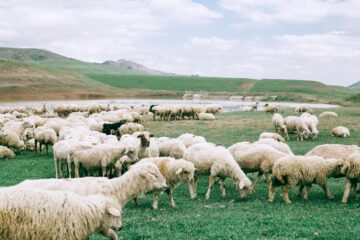Calving is a dangerous time for cows in terms of health risks. Here are seven steps to reduce the exposure of cows to disease during calving.
Calving time poses significant disease challenges because of the stress on the cow which leads to decreased immune function.
The cow is under pressure on several fronts. She is going through the stress of calving, adapting to a new diet and getting used to the milking parlour all over again. This is a particularly stressful time on heifers being introduced for the first time to the milking parlour.
There is also a huge energy demand on cows and heifers after calving to produce milk. In addition the requirement to produce milk places her body under pressure to draw calcium form the bones and into the bloodstream.
Some of the most common diseases at this time are metabolic diseases like milk fever and ketosis. These can further reduce the cow’s immune function which can lead to all sorts of problems. In this article I will focus on how we can monitor these diseases to ensure a stress-free calving time.
Cow comfort
As a lot of calving occurs indoors, cow comfort is essential to reduce stress. When a cow is close up to calving comfort is extremely important. At this stage cows are heavy in calf and must spend a long time lying down and ruminating. Having space in loose sheds or cubicle space allows cows exhibit this essential normal behaviour.
Feedspace
This is critical for close up cows and freshly calved cows. Remember the huge energy demand of the foetus in late pregnancy and particularly the energy that is required to produce milk at calving requires a cow to increase feed intake. She must be able to access
feed at calving time as easily and as stress free as possible. If freshly calved cows are fighting for feed they are under increased stress.
Cow movement
This can be an issue in some farms around calving, having heifers mixing with cows at calving sometimes can increase stress levels. Ensure cows/heifers are calving in groups where possible so special attention can be given to these close up groups.
Body condition score
This should be managed well in advance of calving. However, where thin cows or over conditioned cows are calving once a day milking can be considered to ease pressure on these at risk animals. This practise for the first three weeks may help this at-risk group from coming under further metabolic stress.
Water access
This is really important for the freshly calved cow. The extra milk produced will require large volumes of clean available water to help with overall health and the extra fluid required to produce milk.
Feed quality
When feeding forages to freshly calved cows it is essential to look at energy and protein content. Both energy and protein are required to produce milk. There is a fine balance between the two. The cow has a huge energy requirement coming up to and particularly around calving. We need to know the feed value to predict intakes supplementation.
Hygiene
Good hygiene levels in the calving pens and cubicles is really important in the lead up to calving. It can particularly be a risky period for mastitis in the early days after calving.
These are only general guidelines around calving but these simple things can help reduce stress, increase feed intake and reduce some issues we associate with disease at calving time.
We refer to the weeks before and after calving as the transition period.
The cow is transitioning from late pregnancy, to calving and to producing milk.
There is extensive research which points to this period as the most crucial in the yearly cycle of the cow.
Minimising conditions like milk fever, mastitis, metritis and ketosis underpin this.



